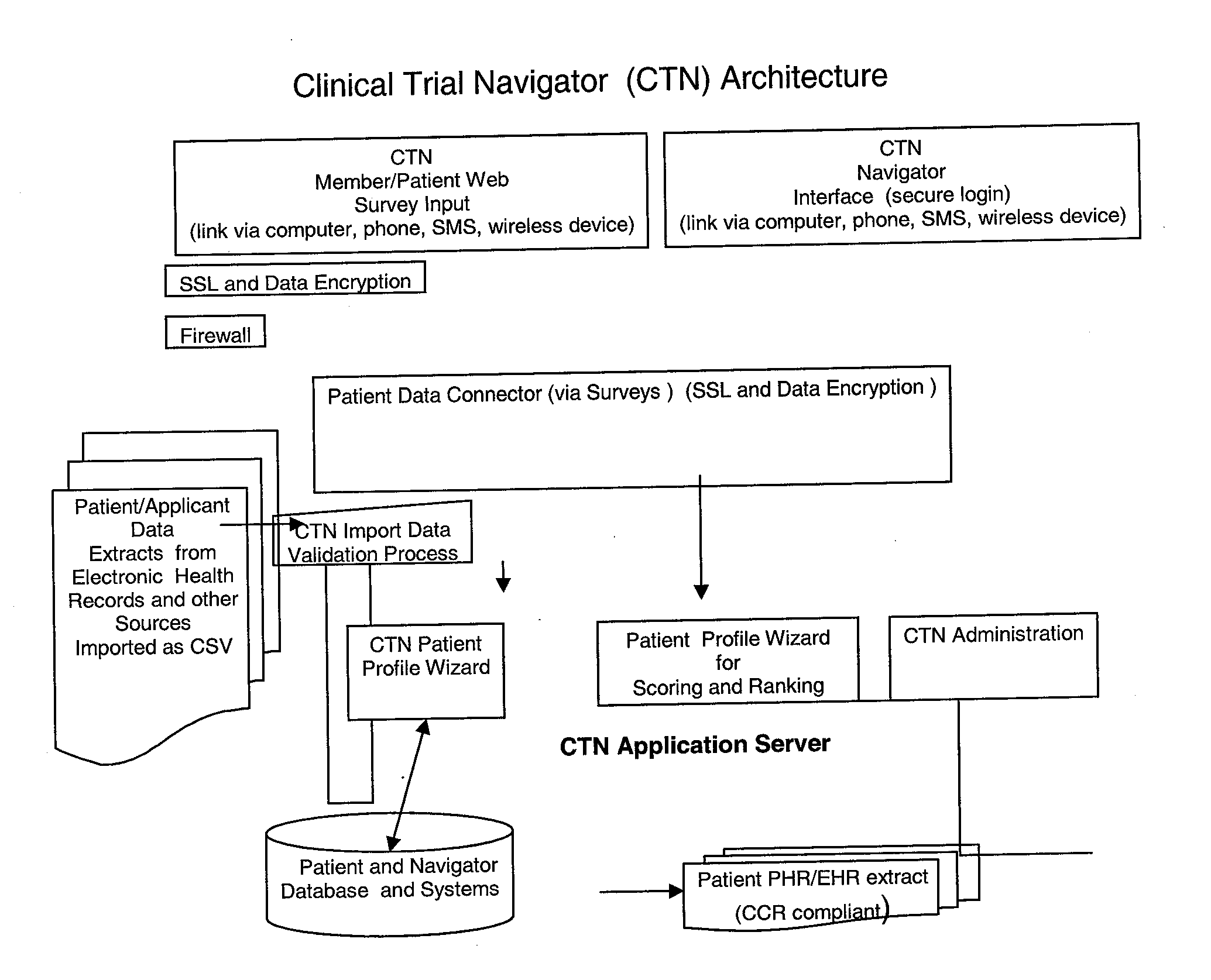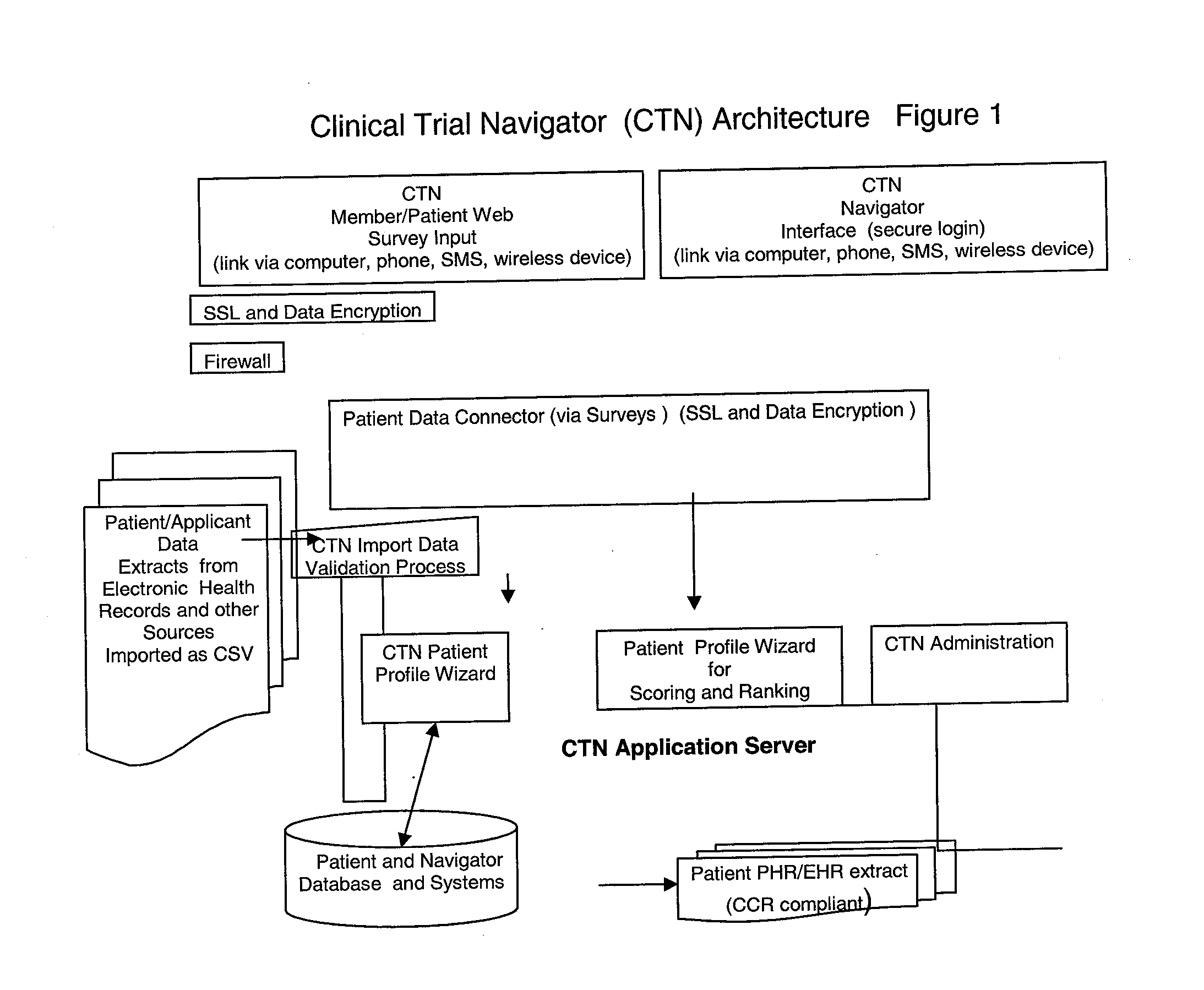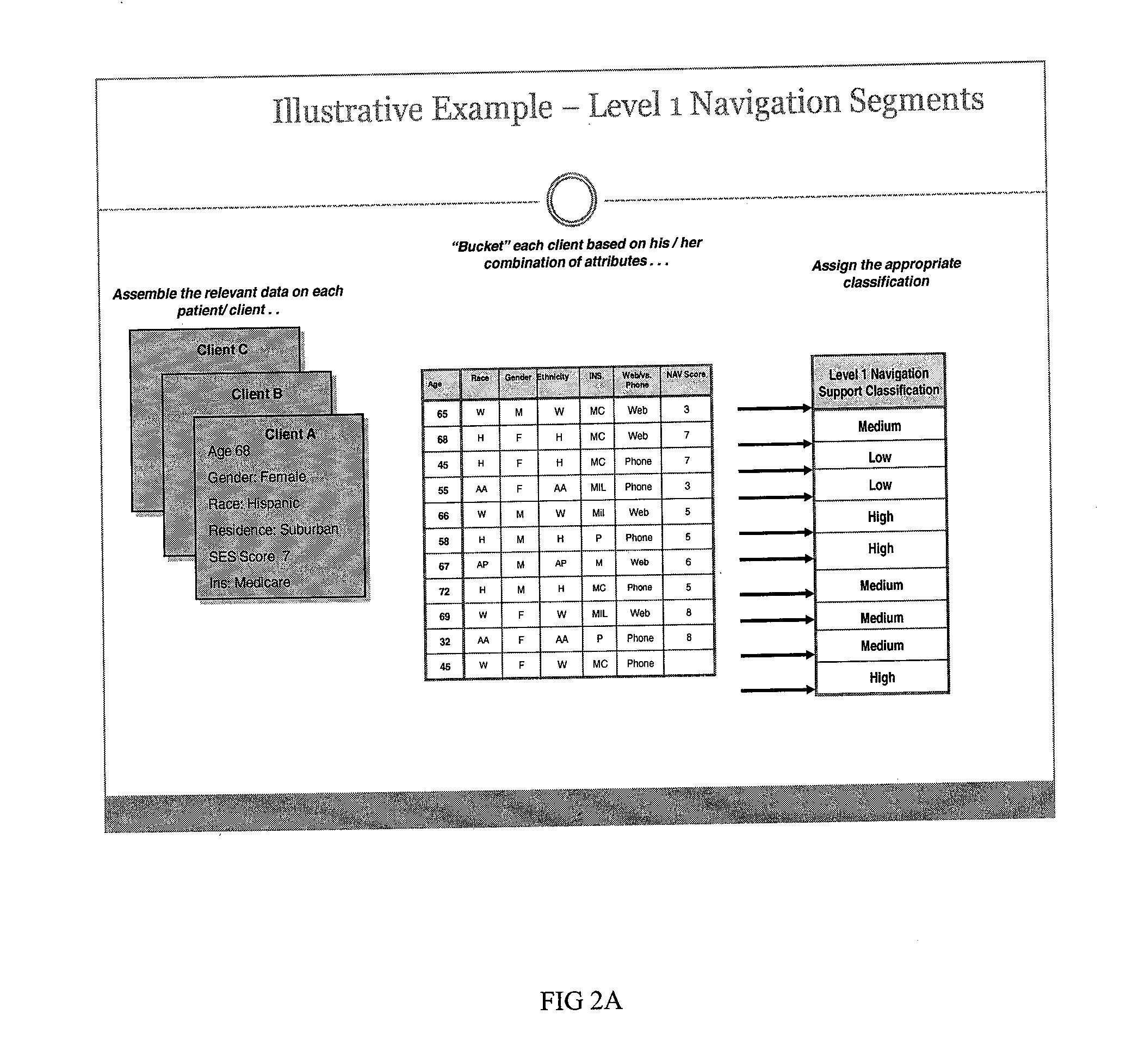Clinical Trial Navigation Facilitator
a clinical trial and facilitator technology, applied in the field of clinical trial navigation facilitator, can solve the problems of consuming nearly 27% of the total cost of the drug development process, unable to consider or learn about potential differences in drug dosage or efficacy between different groups, and unable to facilitate clinical trials. to achieve the effect of improving recruitment, accelerating clinical trials, and supporting the retention of patients
- Summary
- Abstract
- Description
- Claims
- Application Information
AI Technical Summary
Benefits of technology
Problems solved by technology
Method used
Image
Examples
Embodiment Construction
[0020]FIG. 1 is a block diagram illustrating an exemplary Clinical Trial Navigator (CTN) architecture consistent with the disclosed embodiments. The architecture can be a computer system including a Web-server application server module such as the Apache HTTP Sever from the Apache Software Foundation. The web server can include the CTN Member Graphical User Interface (CTN GUI) that allows prospective patients or “members” of the network to create personal profiles. The CTN GUI interface also enables administrators to access the patient and member database. The Patient Profile Wizard is used to create groups of patient members and segment and or cluster them according to pre-defined and flexible segmentation rules. The data and information is stored in the propriety patient database, the applications can reside on the web-server or be contained in the application database. The CTN architecture can work on stand-alone basis or can be connected with a hospital or clinic computer networ...
PUM
 Login to View More
Login to View More Abstract
Description
Claims
Application Information
 Login to View More
Login to View More - R&D
- Intellectual Property
- Life Sciences
- Materials
- Tech Scout
- Unparalleled Data Quality
- Higher Quality Content
- 60% Fewer Hallucinations
Browse by: Latest US Patents, China's latest patents, Technical Efficacy Thesaurus, Application Domain, Technology Topic, Popular Technical Reports.
© 2025 PatSnap. All rights reserved.Legal|Privacy policy|Modern Slavery Act Transparency Statement|Sitemap|About US| Contact US: help@patsnap.com



